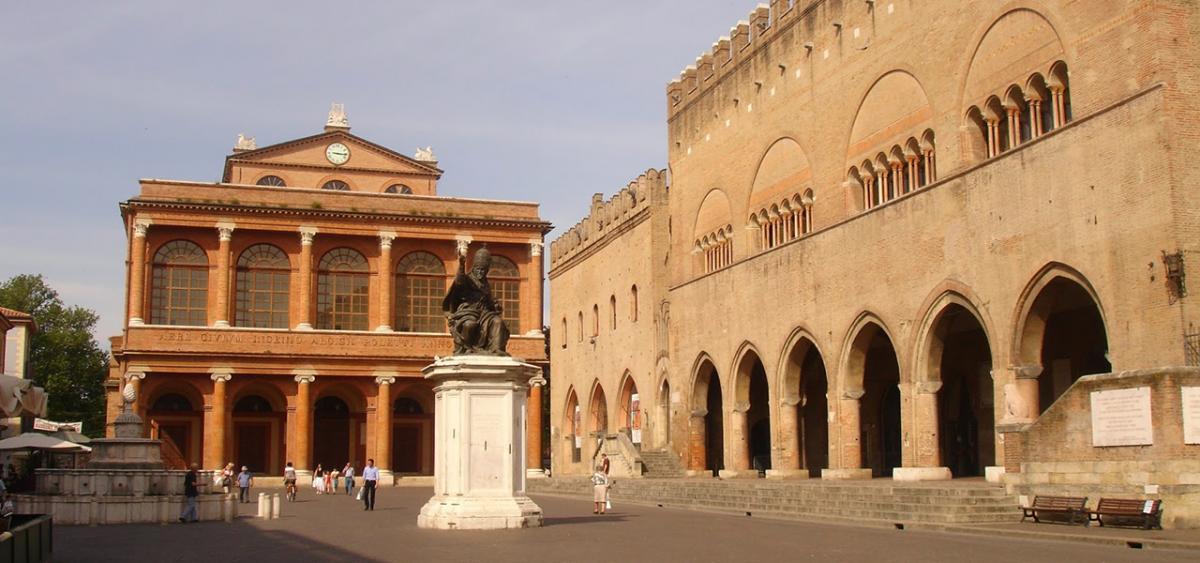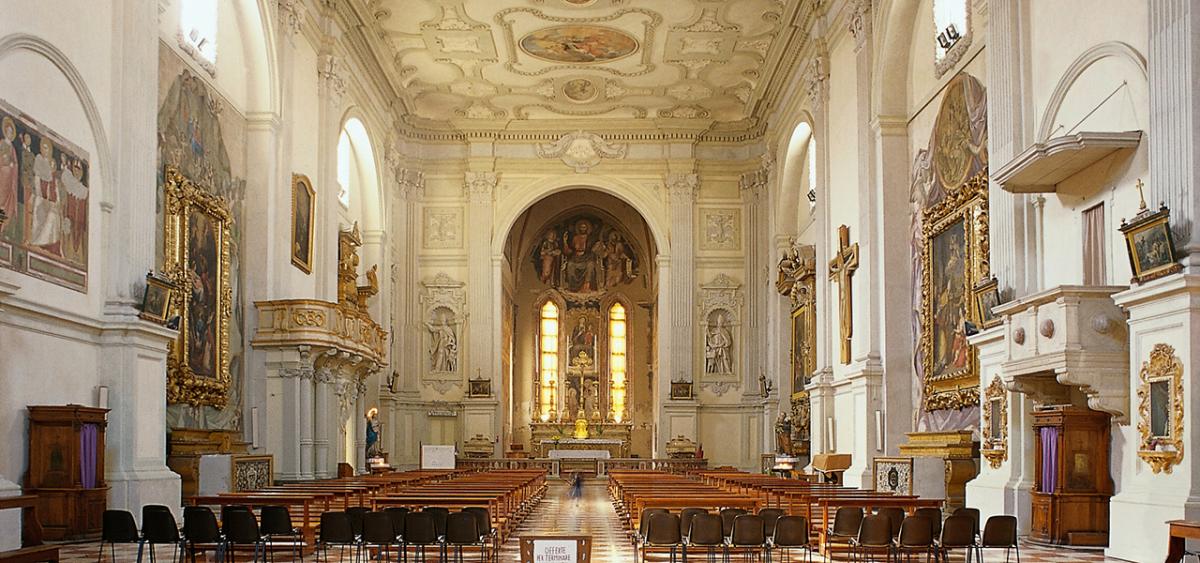
Guida pratica
Medieval Itinerary
The Arengo and Podestà Palaces

Under the Arengo Palace’s portico, which dates from 1204, justice was administered and the municipal assembly met in the hall with multi-lancet windows situated on the first floor.
Next door, is the fourteenth century Podestà residence where the entrance is underlined by an arch with Malatesta symbols. Garampi Palace, which is now the municipal residence, was built at the end of the sixteenth century, modifying the façades of the Arengo and Podestà Palaces.
Following an earthquake in 1916, which brought to light remains of the medieval buildings, restoration work was carried out that redesigned the palaces in Neo-gothic style.
The church of San Giovanni Evangelista known as Sant’Agostino church

The Agostiniani built the church, which is rectangular-shaped with an apse and two side chapels, in the thirteenth century. The decorations that remain in part consist of frescoes and a wooden crucifix attributed to the fourteenth century Rimini school of art.
In the eighteenth century, Ferdinando Bibiena modified the façades and the interior, which was enriched with stuccoes and frescoes by Vittorio Maria Bigari. The fourteenth-century painting was actually hidden and only came to light in 1916 following an earthquake. The Giudizio universale, which is on the triumphal arch, was removed in 1926 and is now housed in the Municipal Museum.

©2016-2023 Assessorato al turismo / Comune di Rimini, Piazzale Fellini 3 47921 - Rimini - +39 0541 704587 / Ufficio Informazioni Turistiche (IAT) +39 0541 53399 / fax +39 0541 56598 / Statistiche web

